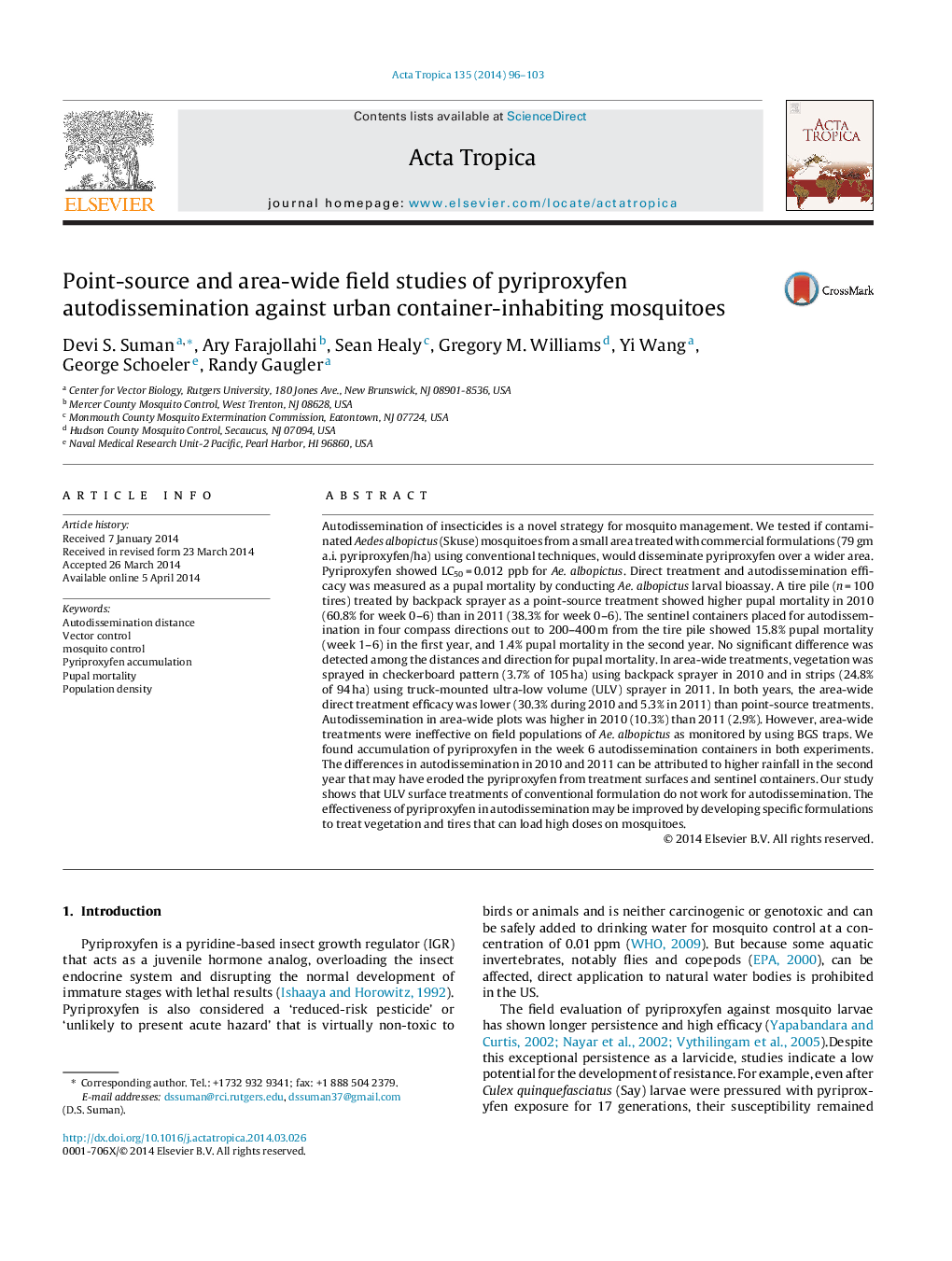| کد مقاله | کد نشریه | سال انتشار | مقاله انگلیسی | نسخه تمام متن |
|---|---|---|---|---|
| 3393836 | 1592788 | 2014 | 8 صفحه PDF | دانلود رایگان |
• Point-source and area-wide study conducted in Aedes albopictus endemic areas.
• Pyriproxyfen autodissemination from treated to untreated areas was detected.
• Point-source was better than area-wide treatment for autodissemination.
• Autodissemination up to 200 m was detected.
• Long exposure accumulated pyriproxyfen in autodissemination samples.
Autodissemination of insecticides is a novel strategy for mosquito management. We tested if contaminated Aedes albopictus (Skuse) mosquitoes from a small area treated with commercial formulations (79 gm a.i. pyriproxyfen/ha) using conventional techniques, would disseminate pyriproxyfen over a wider area. Pyriproxyfen showed LC50 = 0.012 ppb for Ae. albopictus. Direct treatment and autodissemination efficacy was measured as a pupal mortality by conducting Ae. albopictus larval bioassay. A tire pile (n = 100 tires) treated by backpack sprayer as a point-source treatment showed higher pupal mortality in 2010 (60.8% for week 0–6) than in 2011 (38.3% for week 0–6). The sentinel containers placed for autodissemination in four compass directions out to 200–400 m from the tire pile showed 15.8% pupal mortality (week 1–6) in the first year, and 1.4% pupal mortality in the second year. No significant difference was detected among the distances and direction for pupal mortality. In area-wide treatments, vegetation was sprayed in checkerboard pattern (3.7% of 105 ha) using backpack sprayer in 2010 and in strips (24.8% of 94 ha) using truck-mounted ultra-low volume (ULV) sprayer in 2011. In both years, the area-wide direct treatment efficacy was lower (30.3% during 2010 and 5.3% in 2011) than point-source treatments. Autodissemination in area-wide plots was higher in 2010 (10.3%) than 2011 (2.9%). However, area-wide treatments were ineffective on field populations of Ae. albopictus as monitored by using BGS traps. We found accumulation of pyriproxyfen in the week 6 autodissemination containers in both experiments. The differences in autodissemination in 2010 and 2011 can be attributed to higher rainfall in the second year that may have eroded the pyriproxyfen from treatment surfaces and sentinel containers. Our study shows that ULV surface treatments of conventional formulation do not work for autodissemination. The effectiveness of pyriproxyfen in autodissemination may be improved by developing specific formulations to treat vegetation and tires that can load high doses on mosquitoes.
Figure optionsDownload as PowerPoint slide
Journal: Acta Tropica - Volume 135, July 2014, Pages 96–103
